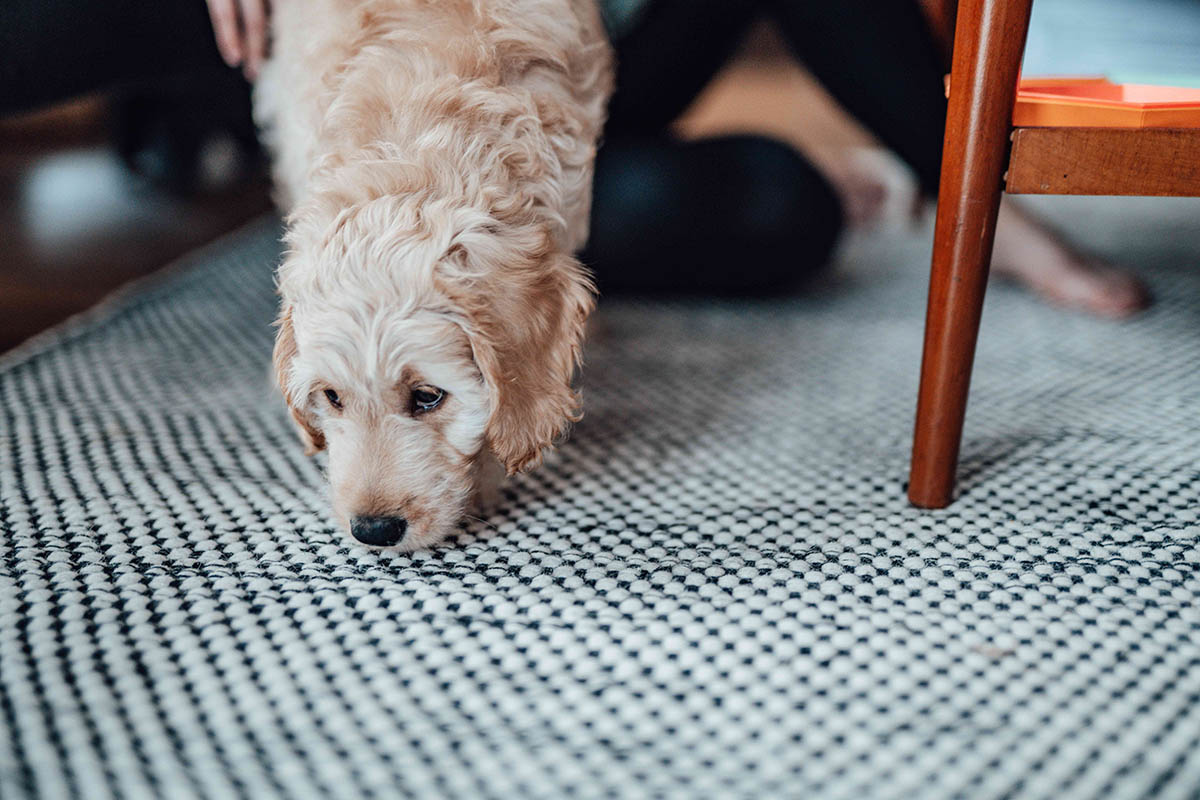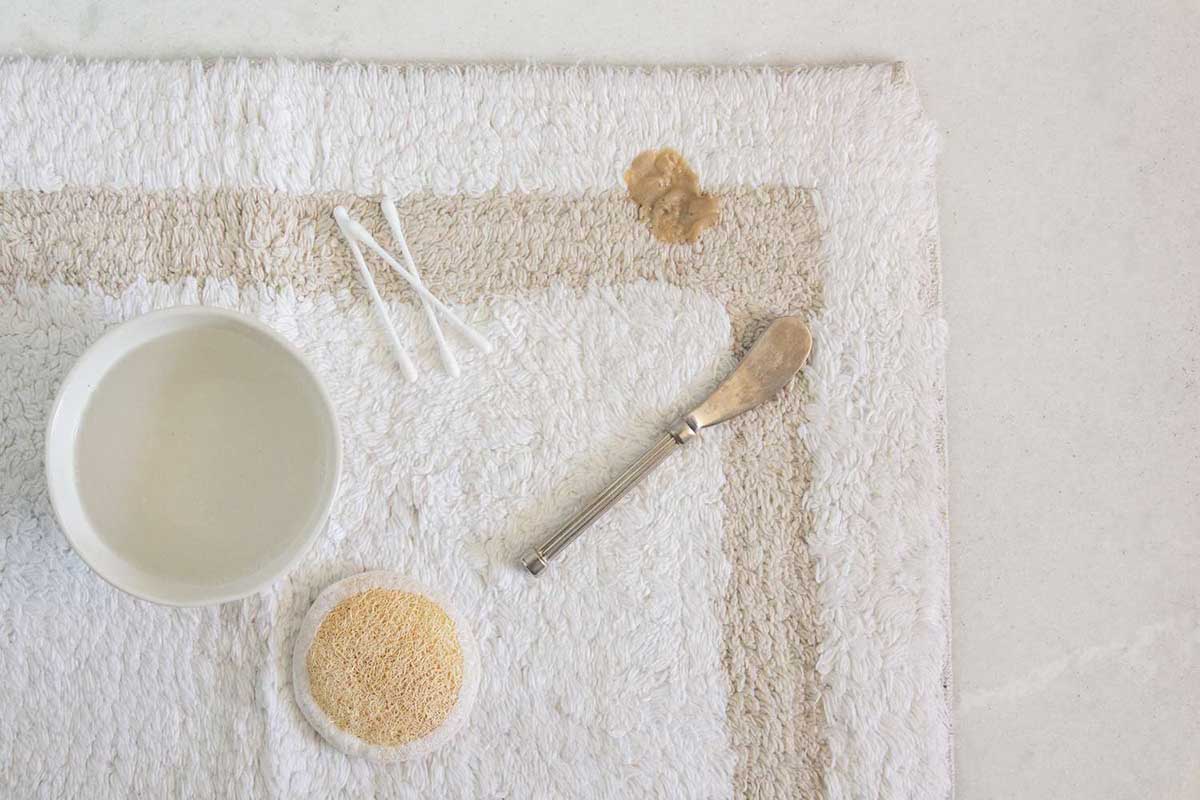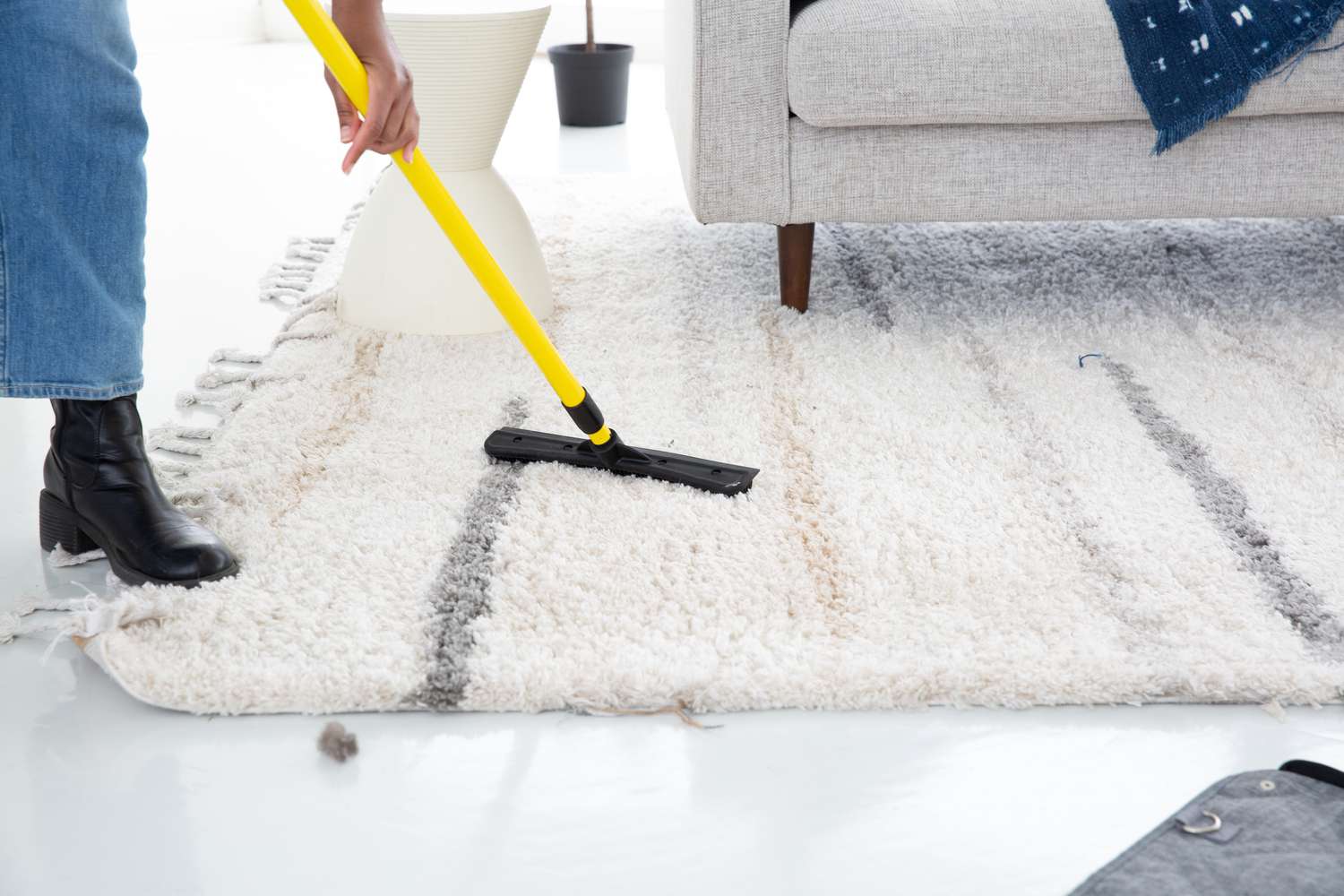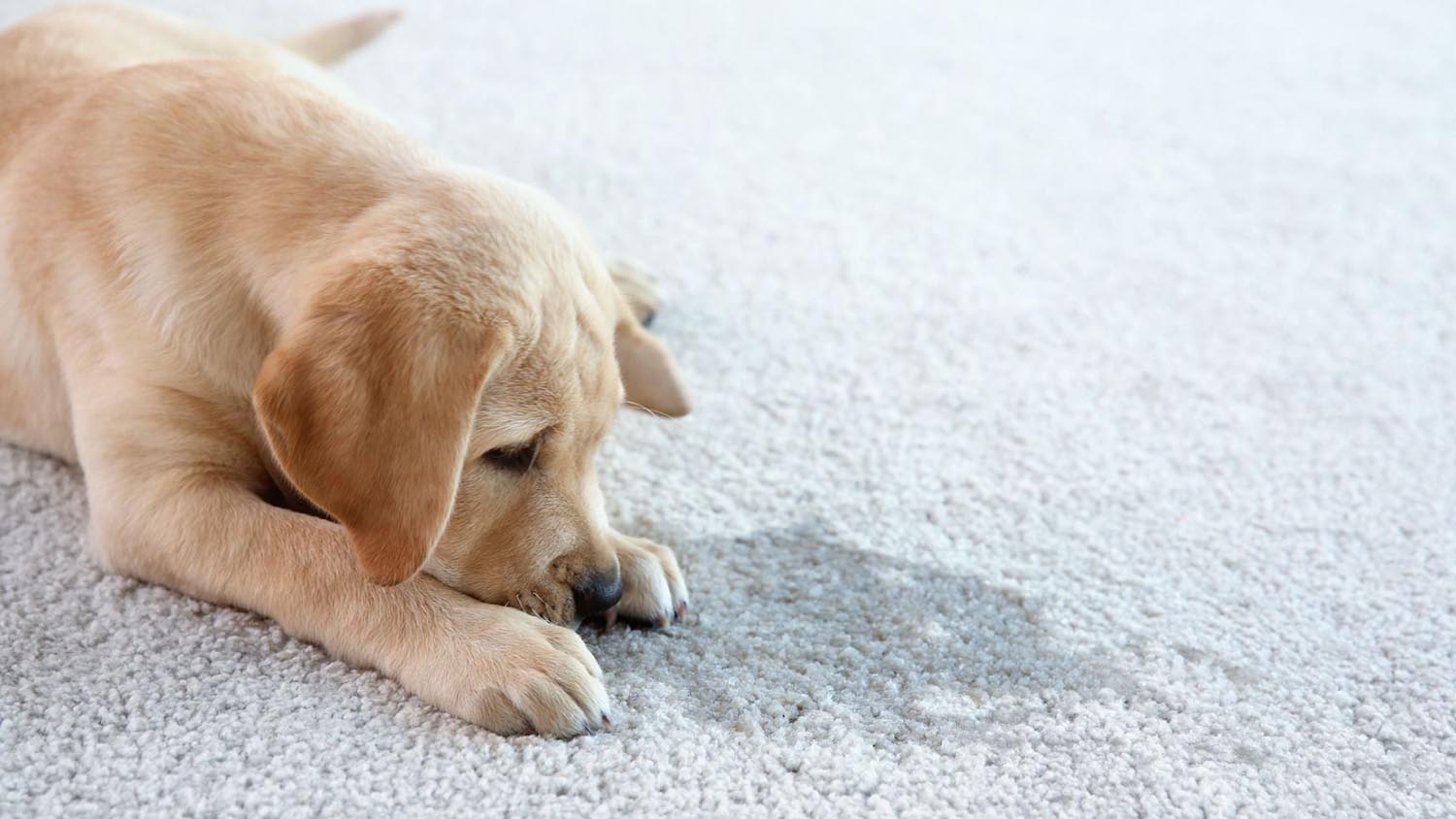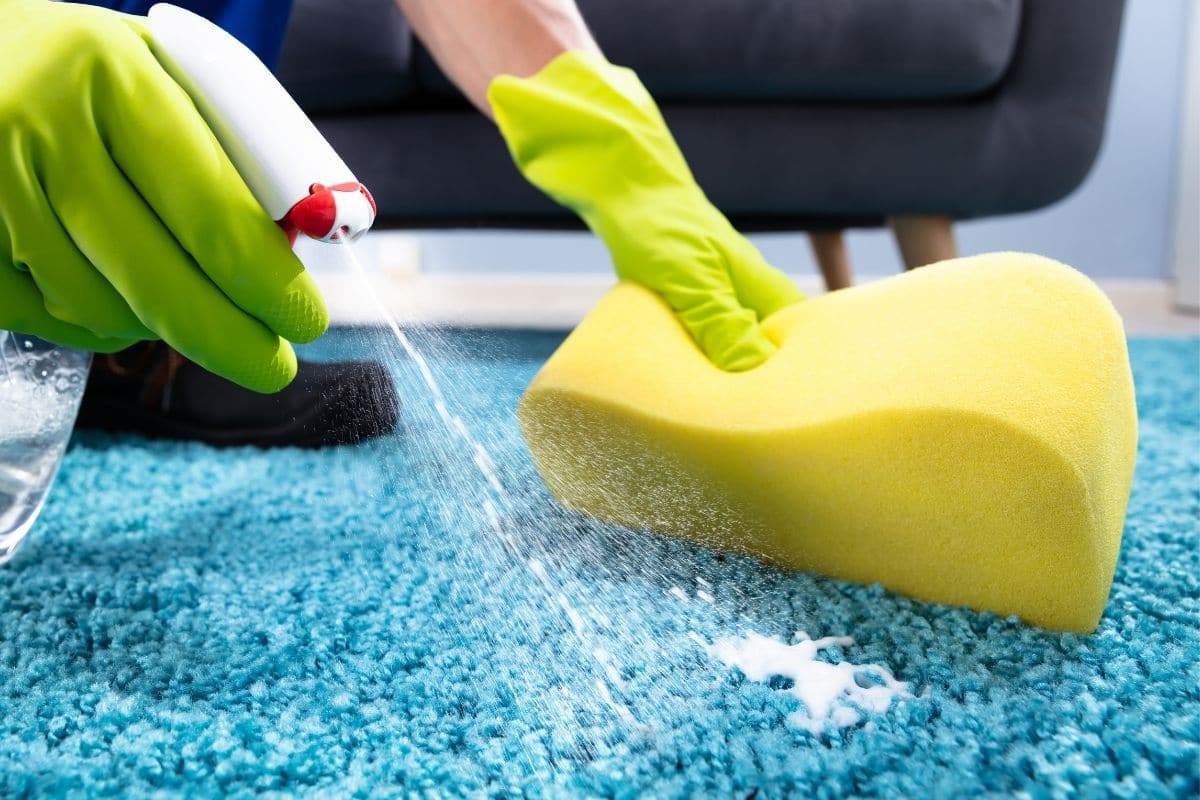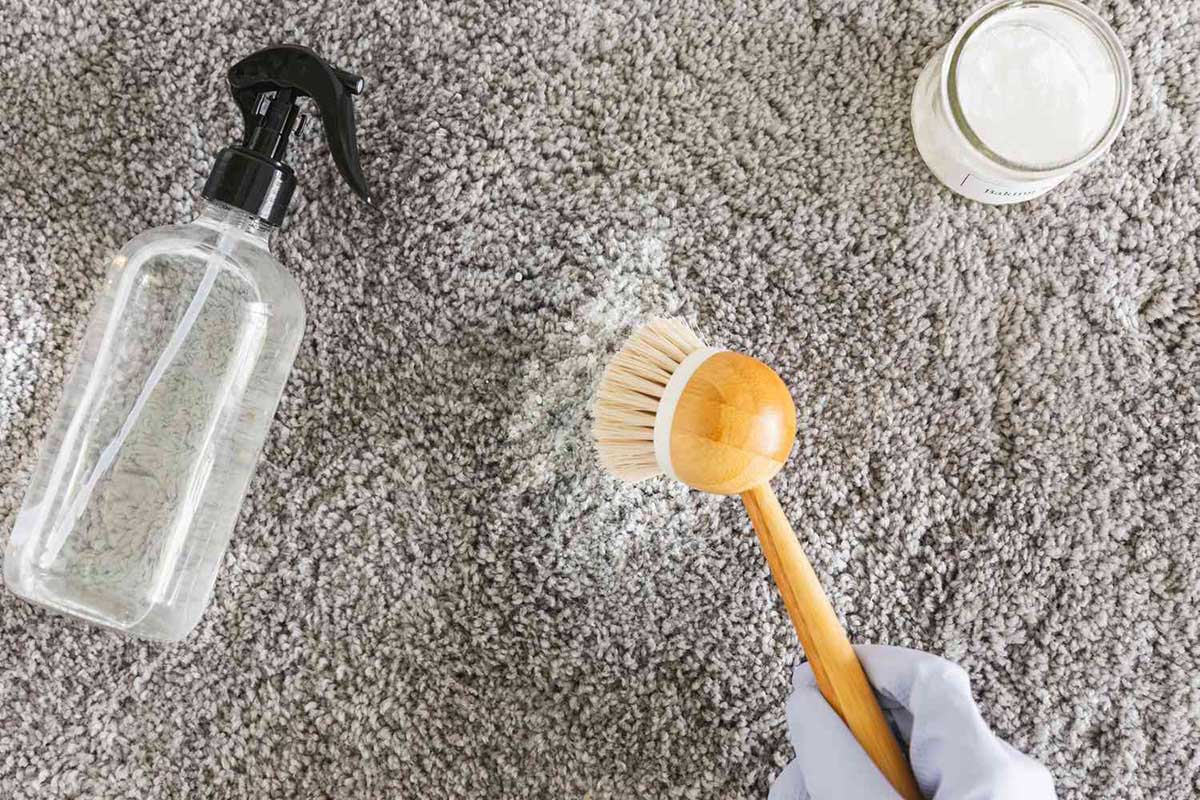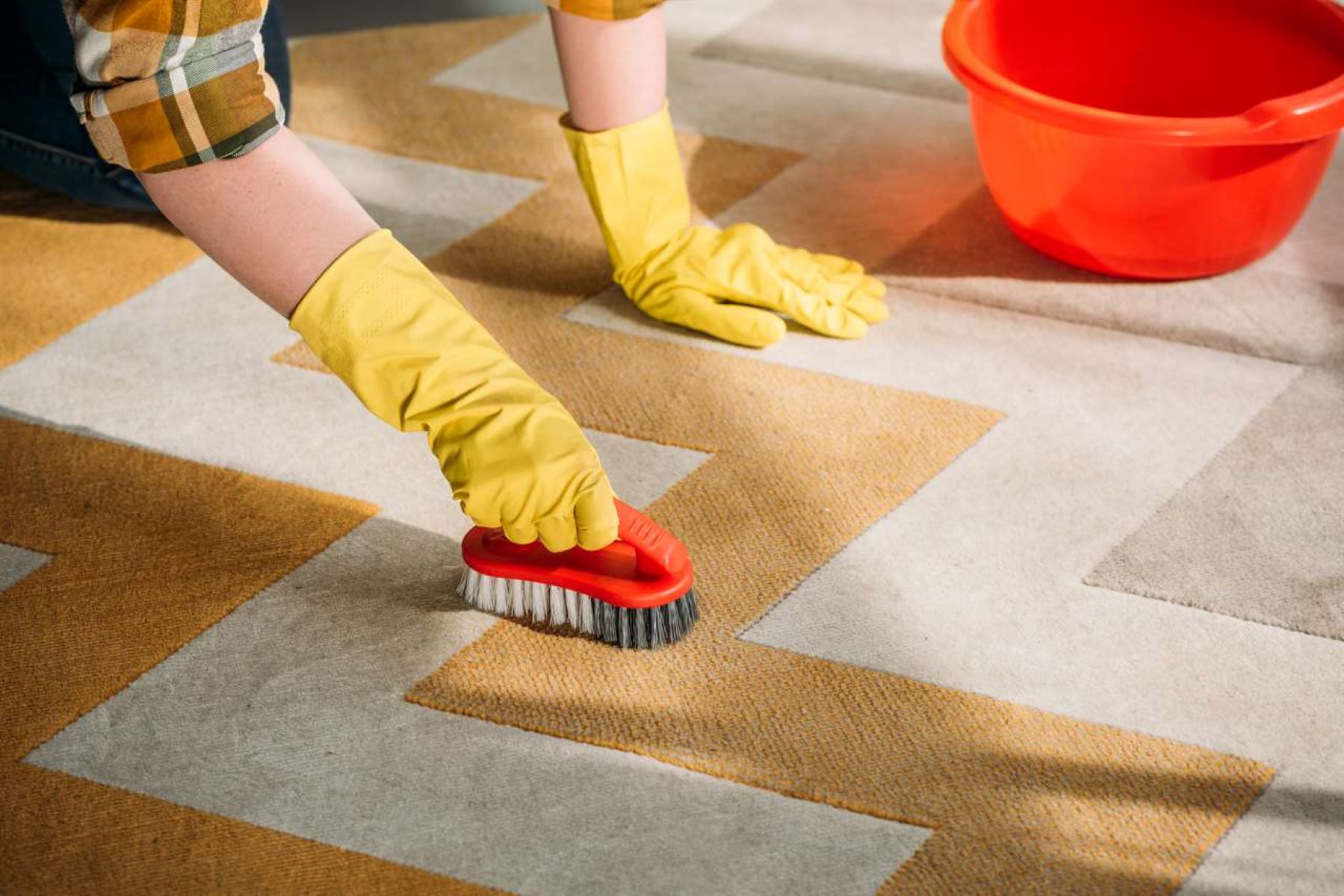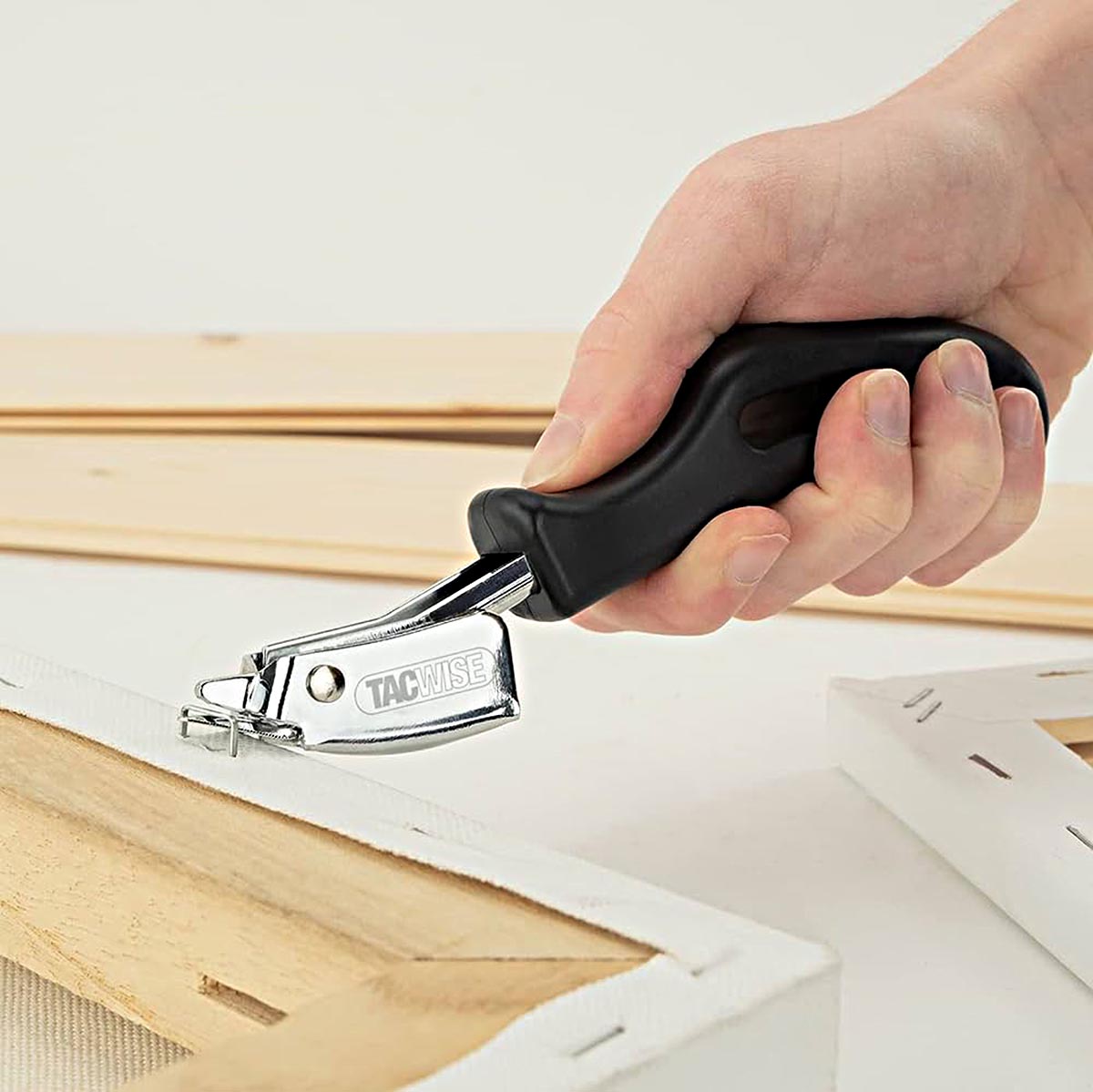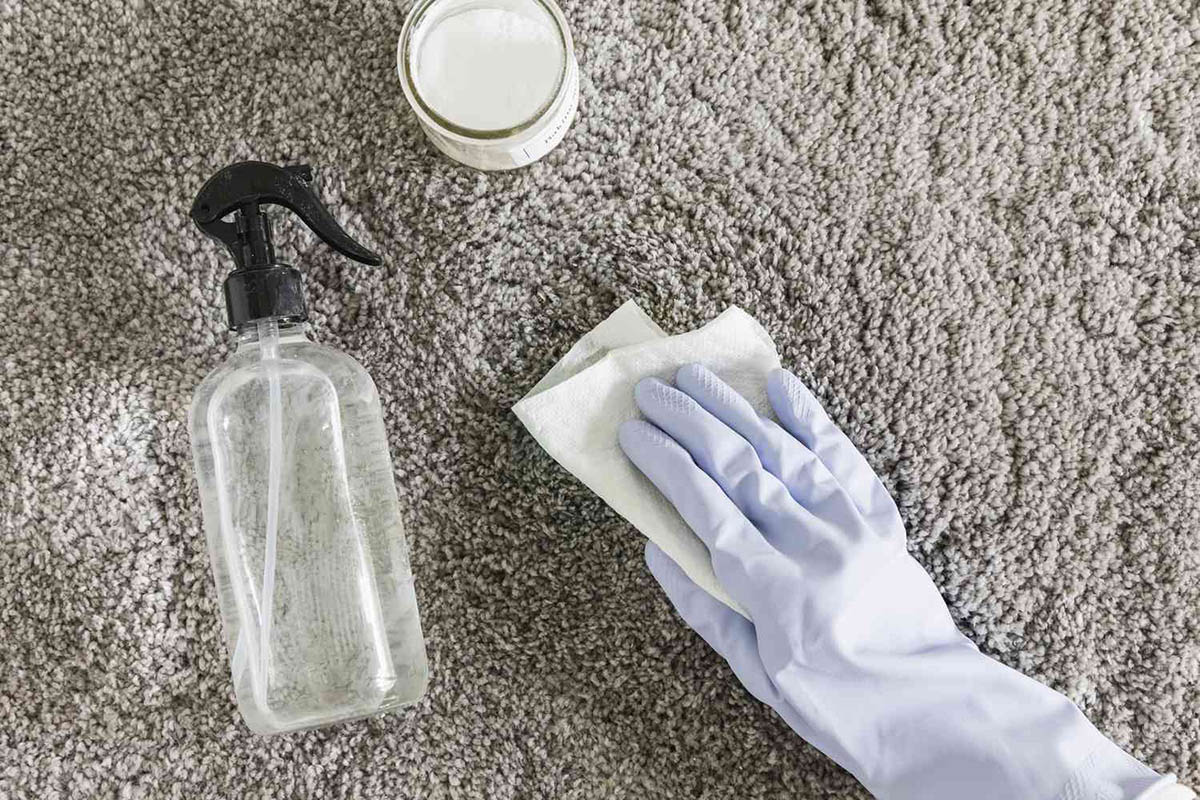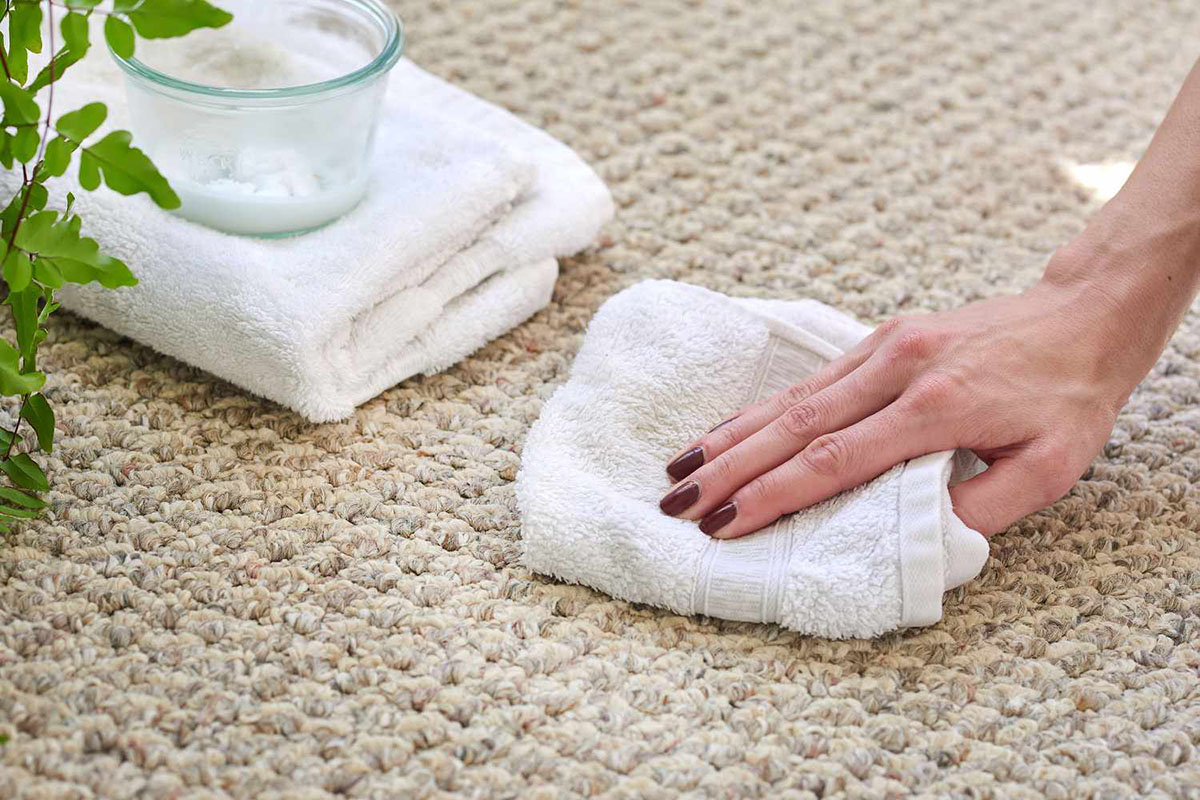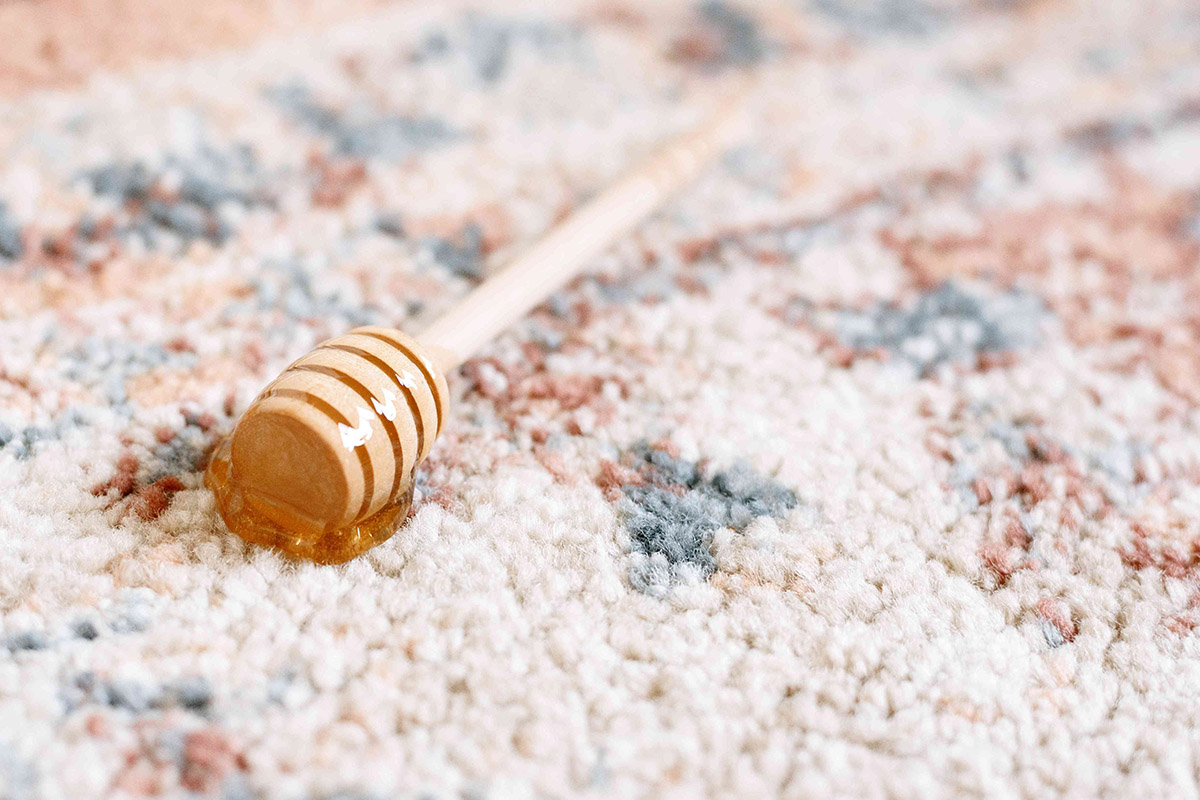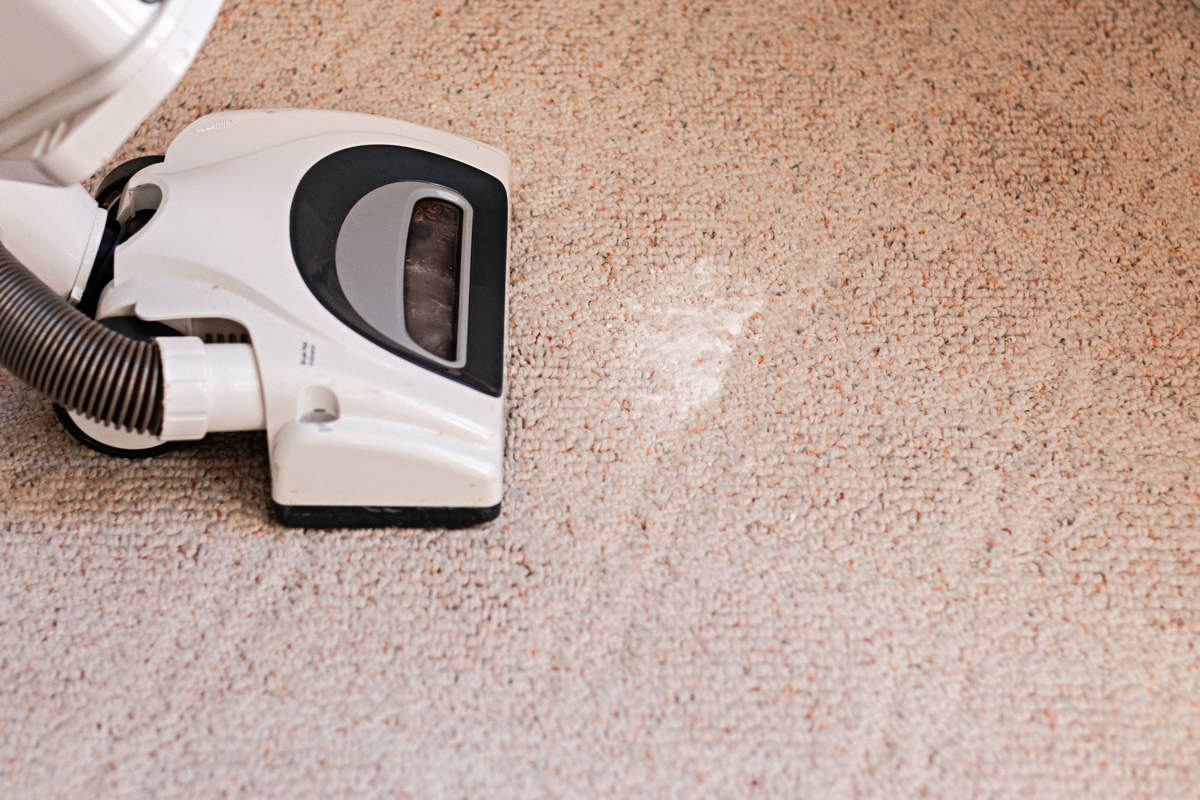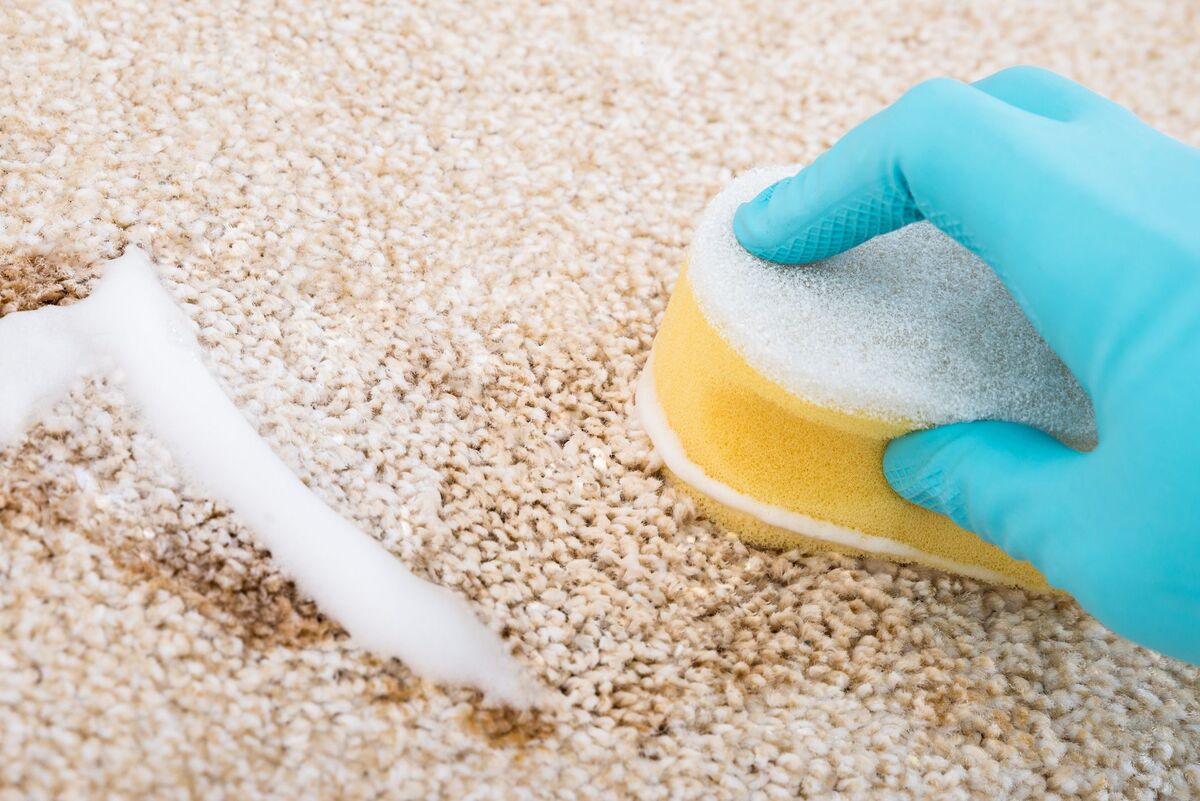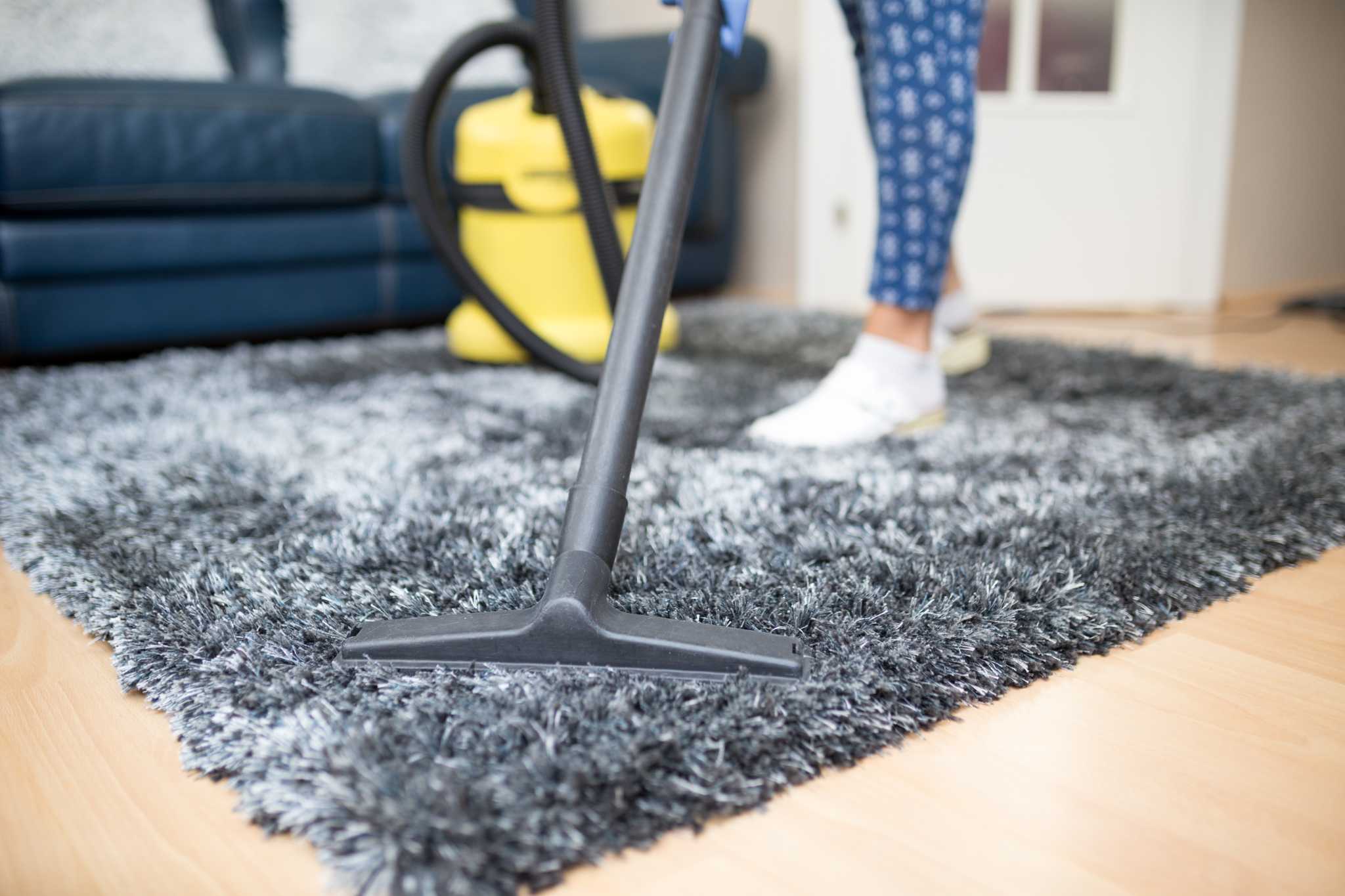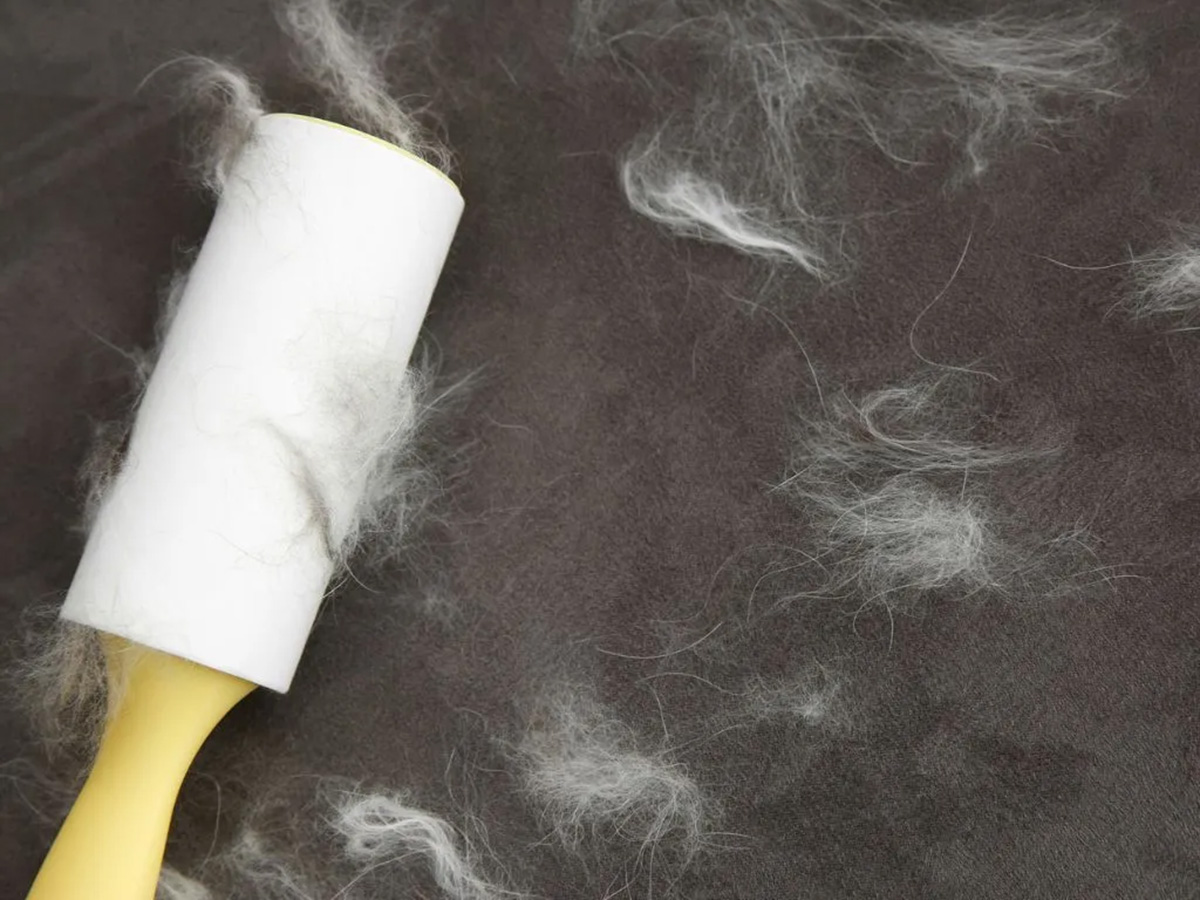

Articles
How To Get Dog Hair Out Of Carpet
Modified: December 7, 2023
Looking for articles on how to get dog hair out of carpet? Learn effective tips and tricks to easily remove dog hair from your carpet.
(Many of the links in this article redirect to a specific reviewed product. Your purchase of these products through affiliate links helps to generate commission for Storables.com, at no extra cost. Learn more)
Introduction
Welcome to the ultimate guide on how to get dog hair out of your carpet! If you’re a dog owner, you’ve probably experienced the struggle of dealing with pesky dog hair that seems to find its way onto every surface in your home. While dogs bring immense joy and companionship, their shedding can be a constant source of frustration.
Having dog hair embedded in your carpet not only looks unsightly, but it can also trigger allergies and make your home less hygienic. But fret not, as there are several effective methods for removing dog hair from your carpet and restoring it to its original cleanliness.
In this article, we will explore different techniques and tools that will help you get rid of dog hair from your carpet once and for all. Whether you have short-haired or long-haired dogs, these tips and tricks will work wonders for eliminating those stubborn hairs from your carpet fibers.
But before we dive into the specifics, it’s important to understand why dog hair seems to stick to your carpet like glue. Dogs shed for various reasons such as changes in weather, stress, or hormonal fluctuations. Additionally, some dog breeds are notorious for their constant shedding. For example, Labrador Retrievers, Golden Retrievers, and German Shepherds tend to shed a lot due to their double coats.
Now that we have a clearer understanding of why dog hair can be such a persistent problem, let’s move on to the steps you can take to get your carpet looking fresh and hair-free!
Key Takeaways:
- Say goodbye to stubborn dog hair in your carpet with these effective methods, from vacuuming to using tape and lint rollers. Keep your home clean and fresh despite your furry friend’s shedding tendencies.
- Regular grooming, consistent cleaning routines, and the right tools are essential for keeping your carpet free from dog hair. Embrace the joy of having a furry companion while maintaining a clean and inviting living space.
Read more: How To Get Dog Hairs Out Of A Car Carpet
Understanding the Problem
Before you start trying to remove dog hair from your carpet, it’s important to have a basic understanding of the problem at hand. Dog hair can become deeply embedded in the carpet fibers, making it difficult to remove with traditional cleaning methods.
The first step in tackling the issue is to address the root cause – shedding. Shedding is a natural process for dogs, and the amount of hair they shed can vary depending on factors such as breed, age, health, and season. While it’s not possible to completely prevent shedding, there are steps you can take to minimize it.
Regular grooming is essential for reducing the amount of loose hair that ends up on your carpet. Brushing your dog’s coat regularly can help remove loose and dead hair before it has a chance to fall onto the carpet. This can significantly decrease the amount of hair that accumulates over time.
In addition to regular grooming, it’s also important to keep your dog’s environment clean. Ensuring that your dog’s bedding and living areas are regularly cleaned and vacuumed can help reduce the amount of hair that gets transferred to your carpet.
Now, let’s move on to the different methods you can use to remove dog hair from your carpet. It’s important to note that a combination of methods might be necessary for more effective results, depending on the severity of the hair buildup.
Next, we will explore how to prepare the area before starting the removal process. This step is crucial to ensure that you can effectively remove as much dog hair as possible and achieve the best results.
Preparing the Area
Before you begin the process of removing dog hair from your carpet, it’s important to prepare the area to maximize your cleaning efforts. By following these steps, you can ensure that you have a clean and clear surface to work with:
- Remove any loose items: Clear the area of any loose items such as toys, shoes, or other debris that may hinder the cleaning process. It’s important to have a clear space to effectively remove the dog hair.
- Vacuum the carpet: Start by vacuuming the carpet thoroughly. This will help remove any loose pet hair and debris that are easily picked up by the vacuum cleaner. Use a vacuum cleaner with a strong suction power and a brush attachment if available. Make sure to go over the entire carpet surface, including corners and edges.
- Use a stiff brush: After vacuuming, take a stiff bristle brush and brush the carpet in all directions. This will help loosen any stubborn dog hair that might be embedded in the carpet fibers.
- Consider using a pre-treatment: For particularly stubborn or heavily soiled areas, you might want to consider using a pre-treatment product specifically designed for pet hair removal. These products can help break down the oils and static that cause dog hair to stick to the carpet, making it easier to remove.
- Pick up larger debris: If you notice any larger debris such as clumps of pet hair or dirt, pick them up and dispose of them before proceeding with the cleaning process. This will prevent them from being further spread around or clogging your cleaning tools.
By taking these steps to prepare the area, you’ll create an optimal environment for effectively removing dog hair from your carpet. Now that the area is ready, we can move on to the different methods and tools you can use to tackle the dog hair problem.
Removing Dog Hair with Vacuuming
Vacuuming is one of the most effective and efficient methods for removing dog hair from your carpet. Here’s how you can make the most out of your vacuuming sessions:
- Choose the right vacuum: Opt for a vacuum cleaner that is specifically designed for pet hair removal. Look for features such as powerful suction, a pet hair attachment, and specialized brushes or bristles that can effectively lift and remove the hair from the carpet fibers.
- Adjust the settings: Set your vacuum cleaner to the appropriate settings for carpet cleaning. Ensure that the brush height is adjusted properly to allow for optimal hair pickup.
- Vacuum in all directions: To ensure thorough cleaning, vacuum the carpet in different directions. Start by vacuuming vertically, then horizontally, and finally diagonally. This will help dislodge any stubborn hair that might be stuck deep within the carpet fibers.
- Pay attention to corners and edges: Don’t forget to vacuum the corners and edges of your carpet, as these are often hotspots for accumulated dog hair. Use the crevice tool attachment to reach into tight spaces and ensure a thorough clean.
- Empty the vacuum bag or canister: Regularly check the bag or canister of your vacuum cleaner and empty it as needed. A full bag or canister can reduce suction power and make it less effective in picking up dog hair. Dispose of the collected hair in a sealed bag or container to prevent any hair from escaping back into your home.
While vacuuming is effective at removing loose dog hair, it may not be as effective for hair deeply embedded within the carpet fibers. In such cases, you can try alternate methods such as using tape or lint rollers, rubber brooms, damp cloths, or applying baking soda or fabric softener. We’ll explore these methods in the next sections.
Remember, consistent vacuuming can help prevent a buildup of dog hair in your carpet, so make it a regular part of your cleaning routine. With regular maintenance and the right tools, you can keep your carpet looking clean and pristine despite your furry friend’s shedding tendencies.
Removing Dog Hair with Tape or Lint Rollers
Tape and lint rollers are handy tools that can quickly and effectively remove dog hair from your carpet. Here’s how you can use them:
- Use adhesive tape: Start by wrapping a piece of adhesive tape around your hand, sticky side out. Then, press your hand firmly against the carpet and move it in a steady, sweeping motion. The sticky surface of the tape will pick up the dog hair, leaving your carpet cleaner and hair-free. Repeat as necessary, replacing the tape when it is no longer sticky.
- Try a lint roller: Lint rollers are another great option for removing dog hair from your carpet. Simply roll the sticky surface of the lint roller over the carpet, applying gentle pressure. The adhesive surface will pick up the dog hair, and you can easily remove it by peeling off the used sheet and exposing a new, clean surface. Repeat until you have removed all the hair.
- Focus on hair-prone areas: Pay close attention to areas where dog hair tends to accumulate the most, such as where your dog frequently lounges or moves around. These areas may require more attention and additional passes with the tape or lint roller.
- Consider using a pet hair remover brush: If you find that tape or lint rollers are not as effective as you’d like, you can try using a pet hair remover brush specifically designed for carpets. These brushes have rubber bristles that create static electricity, attracting and lifting the dog hair from the carpet fibers. Simply brush the carpet in a back-and-forth motion, collecting the hair in the brush as you go.
Using tape or lint rollers is a quick and convenient method to remove dog hair from your carpet, particularly for smaller areas or spot cleaning. However, if you’re dealing with a larger area or a significant amount of dog hair, you might want to consider alternative methods such as using a rubber broom or squeegee. We’ll explore these options next.
Remember, regular maintenance and consistent efforts are key to keeping your carpet as hair-free as possible. Combining different methods and tools will help you achieve the best results in tackling dog hair in your home.
Use a rubber squeegee to remove dog hair from carpet. Simply run the squeegee over the carpet and watch the hair come up easily.
Read more: How To Get Dog Hair Out Of Washer
Using a Rubber Broom or Squeegee
When it comes to removing dog hair from carpet, a rubber broom or squeegee can be highly effective. The rubber bristles or blade create friction, allowing them to attract and gather dog hair from the carpet fibers. Here’s how you can effectively use a rubber broom or squeegee:
- Select the right type of rubber broom: Look for a rubber broom that has stiff and dense bristles. The sturdier the bristles, the better they will be at grabbing and lifting the dog hair from the carpet.
- Choose a suitable rubber squeegee: If you prefer using a rubber squeegee, opt for one with a wide blade that can cover a larger area. This will help you remove more dog hair in fewer strokes.
- Start at one end of the room: Begin at one end of the room and work your way towards the other side, systematically moving in straight lines or using a back-and-forth motion. This ensures that you cover the entire carpet surface and don’t miss any areas.
- Apply even pressure: When using the rubber broom or squeegee, apply even pressure to the bristles or blade as you move it across the carpet. This helps create the necessary friction to lift the dog hair from the fibers. Be sure to use firm but gentle strokes to avoid damaging the carpet.
- Gather the hair: As you move the rubber broom or squeegee, you’ll notice the dog hair gathering in clumps. Periodically stop and collect these hair clumps by hand or with a dustpan and brush. Dispose of the collected hair in a sealed bag or container.
- Repeat as needed: Continue using the rubber broom or squeegee until you have covered the entire carpet, paying extra attention to areas with more hair accumulation. If necessary, make multiple passes to ensure a thorough clean.
Using a rubber broom or squeegee is not only effective but also gentle on your carpet. The rubber bristles or blade won’t damage or pull at the carpet fibers, making it a safe and efficient method for removing dog hair.
However, if you find that some hair remains after using a rubber broom or squeegee, don’t worry. There are still other methods you can try, such as using a damp cloth or sponge. We’ll explore these methods in the next section.
Remember, consistency is key when it comes to maintaining a hair-free carpet. Regularly incorporating different cleaning techniques will help you keep your carpet looking clean and fresh, even with your furry friend around.
Using a Damp Cloth or Sponge
If you’re dealing with stubborn dog hair that won’t easily come loose from your carpet, using a damp cloth or sponge can be an effective method. The moisture helps to loosen the hair, making it easier to remove. Here’s how you can use a damp cloth or sponge to tackle dog hair in your carpet:
- Prepare the cloth or sponge: Dampen a clean cloth or sponge with water. Make sure it is wet but not dripping excessively. You can also add a small amount of mild detergent or fabric softener to the water for added effectiveness.
- Wring out excess moisture: Before using the damp cloth or sponge, wring out any excess moisture to prevent over-saturating the carpet.
- Spot test: It’s always a good idea to perform a spot test in an inconspicuous area of your carpet to ensure that the damp cloth or sponge doesn’t cause any discoloration or damage. If there are no adverse effects, you can proceed with the cleaning process.
- Work in small sections: Begin by focusing on a small section of the carpet at a time. Place the damp cloth or sponge on the carpet and press it firmly against the fibers. Use circular motions or gentle scrubbing to lift the dog hair.
- Refresh the cloth or sponge: As the cloth or sponge becomes saturated with dog hair, rinse it out or replace it with a fresh one. This will prevent you from redistributing the hair back onto the carpet.
- Dry the area: Once you have removed the dog hair, use a dry cloth or towel to blot the damp area and absorb any excess moisture. This will help prevent any potential damage to the carpet fibers and avoid leaving behind a damp spot.
Using a damp cloth or sponge can be particularly useful for removing dog hair that is deeply embedded in the carpet fibers. The moisture helps to loosen the hair, allowing it to be lifted more easily. This method is especially effective for shorter pile carpets.
If there are still some residual dog hair left on the carpet, don’t worry. There are still other methods you can try, such as applying baking soda or fabric softener. We’ll delve into these methods in the next section.
Remember, regular maintenance and consistent efforts will help ensure that your carpet remains free from dog hair. By incorporating different techniques, you can achieve the best results and keep your carpet looking clean and fresh.
Applying Baking Soda or Fabric Softener
If you’re looking for additional methods to remove dog hair from your carpet, applying baking soda or fabric softener can be highly effective. These household items help to loosen the hair strands and reduce static cling, making it easier to remove them from the carpet fibers. Here’s how you can use baking soda or fabric softener to tackle dog hair:
- Using Baking Soda:
- Sprinkle a generous amount of baking soda over the carpet, focusing on areas with the most hair accumulation.
- Using a soft-bristle brush, gently work the baking soda into the carpet fibers. This will help distribute the baking soda and loosen the dog hair.
- Allow the baking soda to sit on the carpet for a minimum of 15 minutes. This will give it time to neutralize any odors and further loosen the dog hair.
- Use a vacuum cleaner with a brush attachment to thoroughly vacuum the carpet, making sure to go over each area multiple times. The baking soda will help to lift the dog hair, making it easier to be suctioned up by the vacuum.
- Using Fabric Softener:
- Dilute fabric softener with water in a spray bottle, following the instructions on the bottle for the correct ratio. Alternatively, you can mix fabric softener with water in a bucket.
- Mist or spray the diluted fabric softener onto the carpet, focusing on areas with a heavy concentration of dog hair.
- Allow the fabric softener to sit on the carpet for a few minutes to penetrate the dog hair and reduce static cling.
- Using a rubber broom, squeegee, or a damp cloth, gently agitate the carpet in a back-and-forth motion. This will help dislodge the dog hair from the carpet fibers.
- Vacuum the treated carpet thoroughly to remove the loosened hair and any residual fabric softener.
Both baking soda and fabric softener are effective at reducing static and making it easier to remove dog hair. The baking soda also helps to eliminate odors that may be absorbed by the carpet.
Remember to test a small, inconspicuous area of your carpet before applying baking soda or fabric softener to ensure that it doesn’t cause any discoloration or damage. Additionally, always follow the instructions on the product labels and take any necessary precautions.
By using these additional methods in combination with vacuuming, damp cloth/sponge, tape or lint rollers, and rubber brooms or squeegees, you can effectively remove dog hair from your carpet and maintain a clean and hair-free environment.
Now that you have a variety of techniques to choose from, you can select the ones that work best for your carpet type and personal preferences. Happy cleaning!
Final Thoughts and Tips
Congratulations! You now have a toolbox full of effective methods and techniques for keeping dog hair out of your carpet. Here are some final thoughts and tips to help you achieve the best results:
- Stay consistent with grooming: Regularly grooming your dog is key to minimizing the amount of loose hair that ends up in your carpet. Brush your dog’s coat regularly to remove loose and dead hair, reducing the overall amount of shedding.
- Establish a cleaning routine: Set aside a specific time in your schedule for cleaning your carpet. Consistency is key to preventing the buildup of dog hair and keeping your carpet looking fresh.
- Use prevention techniques: Consider using preventative measures such as dog hair mats or blankets in areas where your dog spends a lot of time. These can help trap loose hair and protect your carpet from excessive shedding.
- Consider professional cleaning: If your carpet has a significant amount of embedded dog hair or is generally difficult to clean, you may want to consider hiring a professional carpet cleaning service. They have specialized equipment and techniques that can effectively remove stubborn dog hair.
- Invest in a high-quality vacuum cleaner: A vacuum cleaner specifically designed for pet hair can make a world of difference in effectively removing dog hair from your carpet. Look for models with strong suction, pet hair attachments, and HEPA filters to capture allergens.
- Regular maintenance is key: Don’t wait until your carpet becomes overwhelmed with dog hair before taking action. Regularly vacuum, use tape or lint rollers, or employ other methods to stay on top of the hair buildup in your carpet.
- Monitor and address allergens: If you or your family members suffer from allergies, take extra care to keep your carpet as clean as possible. Consider using air purifiers and regularly washing bedding to reduce allergen levels in your home.
- Consider professional grooming: If your dog’s shedding is excessive or you’re struggling to keep up with the hair, professional grooming sessions can help manage the shedding and reduce the overall amount of hair in your home.
Remember, removing dog hair from your carpet is an ongoing process. By implementing these tips and techniques, you can significantly reduce the presence of dog hair and maintain a clean and hair-free carpet in your home. Embrace the joy that comes with having a furry friend while keeping your living space fresh and inviting!
Frequently Asked Questions about How To Get Dog Hair Out Of Carpet
Was this page helpful?
At Storables.com, we guarantee accurate and reliable information. Our content, validated by Expert Board Contributors, is crafted following stringent Editorial Policies. We're committed to providing you with well-researched, expert-backed insights for all your informational needs.
